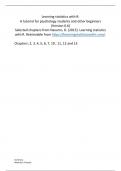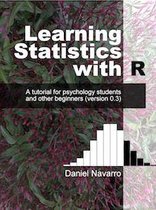Resumen
Summary Learning Statistics with R - Statistics 1 with R code examples
- Grado
- Institución
- Book
A well written summary for the course Statistics 1 at TiU. The summary introduces Statistics theory and how to write this in R code. It also introduces Rstudio. The whole summary is divided into chapters and subchapter and contains R code examples in the form of images. Summary is based on the book...
[Mostrar más]




